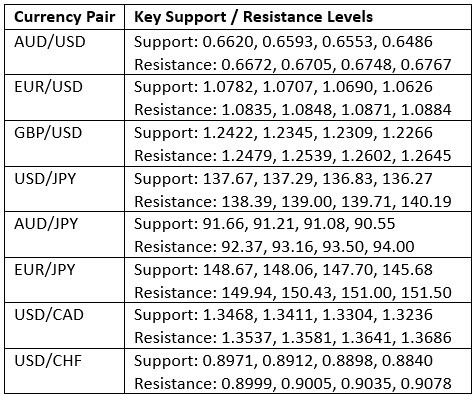[ad_1]
This week I will begin with my monthly and weekly Forex forecast of the currency pairs worth watching. The first part of my forecast is based upon my research of the past 20 years of Forex prices, which show that the following methodologies have all produced profitable results:
Let us look at the relevant data of currency price changes and interest rates to date, which we compiled using a trade-weighted index of the major global currencies:

For the month of May, I forecasted that the EUR/USD and GBP/USD currency pairs would rise in value.
The performance of my forecast so far this month is as follows:

Last week, I made no weekly forecast, as there were no unusually large counter-trend price movements. The situation is the same this week, so I again make no weekly forecast.
Directional volatility in the Forex market will probably remain the same over the coming week, as we again have quite a light schedule of high-impact data releases scheduled for the coming week compared to last week.
Last week was dominated by relative strength in the New Zealand Dollar, and relative weakness in the Japanese Yen.
You can trade my forecasts in a real or demo Forex brokerage account.
Key Support/Resistance Levels for Popular Pairs
I teach that trades should be entered and exited at or very close to key support and resistance levels. There are certain key support and resistance levels that can be monitored on the more popular currency pairs this week.

Let us see how trading two of these key pairs last week off key support and resistance levels could have worked out:
I had expected the level at $1.0899 might act as resistance in the EUR/USD currency pair last week, as it had acted previously as both support and resistance. Note how these “role reversal” levels can work well. The H1 price chart below shows how the price rejected this level shortly after the start of last Tuesday’s London session (which can be a great time to enter trades in major currency pairs like this one) with an inside candlestick, marked by the down arrow in the price chart below signaling the timing of this bearish rejection. This trade has been nicely profitable so far, giving a maximum reward-to-risk ratio of more than 6 to 1 based upon the size of the entry candlestick.

I had expected the level at $1.2539 might act as resistance in the GBP/USD currency pair last week, as it had acted previously as both support and resistance. Note how these “role reversal” levels can work well. The H1 price chart below shows how the price rejected this level shortly after the start of last Tuesday’s London session (which can be a great time to enter trades in major currency pairs like this one) with an inside candlestick which was also a doji candlestick (signifying indecision), marked by the down arrow in the price chart below signaling the timing of this bearish rejection. This trade has been nicely profitable so far, giving a maximum reward-to-risk ratio of more than 5 to 1 based upon the size of the entry candlestick.

Ready to trade our Forex weekly forecast? Here’s a list of some of the best Forex trading platforms to check out.
[ad_2]
